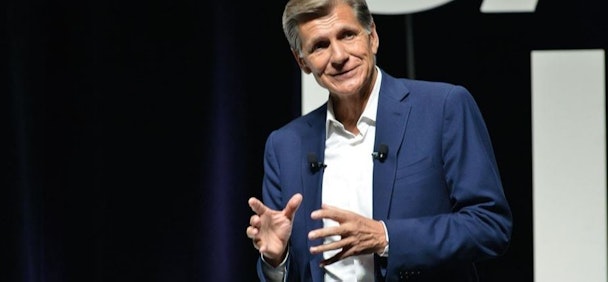Agencies: disrupt yourselves before the unbundlers do it for you
As his remarks at New York’s Technomony conference suggest, Sir Martin Sorrell thinks the industry still remains ‘capable of reinvention’. As a man who grew his empire by snapping up the greatest shops of the time and bringing them together to achieve scale and efficiency, it’s not hard to imagine that ‘reinvention’ suggests leaner models still to come.

Marc Pritchard's reforms at P&G have led the debate on agency model disruption.
But he’s not the only one suggesting a more viable model for the industry. If the influx of management consultancies wasn’t enough, already this year has shown that disruption will come from clients and new agency upstarts too.
In April, Marc Pritchard (pictured) announced P&G’s hybrid agency – an all-star cast of individuals plucked out of the brand’s rostered agencies – and more advertisers such as Royal Bank of Scotland have also stated their intentions to in-house media and creative services.
Meanwhile ex-Co-op CMO Jemima Bird made her bid to address marketers’ woes around cost and compromise with a new agency described as a ‘front door’ to a network of talent operating in the gig economy model. Her clients can plug into these talents as and when they’re needed, providing a suite of individual services, on-demand. Whether this is any more than an experienced player monetising her contacts book, or a 2018 version of what Marc Cave attempted to do with Drugstore a decade before, remains to be seen.
While the acquisitive WPP was out to drive efficiency through integration at scale, today’s industry is challenged by a trend going the other way: unbundling. The pitch to clients is that offering access to individual services makes budget clear and control direct. It’s about stripping what are perceived as bloated agency services down to create an ‘Uber for advertising’ which competes on price, flexibility and speed.
The ambition may be laudable: waste and rigidity should be worked out of the process. But I don’t believe that unbundling is some kind of silver bullet. By stripping away the “non-essential” layers of an agency these models may end up cutting long-term value, not just costs.
We know, thanks to the work of Peter Field and Les Binet, that the greatest value in marketing is felt in the long-term and that creativity can make advertising investments go 10 times further. The great enduring client-agency partnerships are a testament to this thinking – the likes of AMV and Walkers, Leo Burnett and McDonald's, John Lewis and Adam&EveDDB, and our own relationship with Carlsberg.
These relationships are built on the understanding that a long-term creative vision can grow a business significantly. The creation of sustainable brand growth is in value added over time by an agency’s thought leadership, and the client’s commitment to a long-term programme.
In an unbundled agency, who is responsible for challenging and growing a brand’s vision in line with an ever-changing customer? A platform to connect talent with clients will carry little to no institutional memory or culture, the two ingredients of ongoing creative progression. If this responsibility falls to the client (and their in-house team) that’s fine – but it’s no longer an agency, defined as a separate entity which acts as the client’s “agent”. And in-house teams are often challenged to retain the required distance and broader cultural understanding for their recommendations to carry the weight of change.
This is not a defence of the status quo by any means – it’s fairly evident that the industry has failed to adapt at the pace required by the market. And that the problem is endemic in many organisations.
Over a hundred years ago the German sociologist Robert Michels offered an insight as to why. He observed that organisations, as they grow, risk distorting and displacing the goals for which they were created as the needs of the bureaucracy and its leaders take over.
To remedy this creative agencies need to re-focus on the purpose which brought them into existence: the power of creative ideas to build brands and grow clients’ businesses. That starts with an appraisal of the organisation. Of all the great people, exciting initiatives and stimulating ideas which agencies create, what is doing the job of growing the client’s business?
We know that the work of cultivating creativity doesn’t live solely in the creative team a client might want to pay for – it’s agency-wide. But at a time when clients are looking for efficiency, agency leaders must get better at justifying the way their businesses operate.
That means cutting out areas which are not value additive, and also defending those assets which new competitors might call ‘non-essential’ – the culture, the support services, the account management – which at their best are anything but. It means ensuring that talent is best of breed, expertise is fluid rather than fixed and working practices are agile. And finally it means ensuring the whole system is geared to achieving strong commercial outcomes by formulating more entrepreneurial forms of remuneration based on shared risk and reward, such as equity or target-based deals.
Hoteliers, taxi firms and retailers are still reeling from their respective unbundlers, many years later. For our industry, reinvention needn’t mean disruption if agencies can refocus their organisations on commercial creativity above all else, and demonstrate their value rather than cost.
Marc Nohr is chief executive of Fold7
